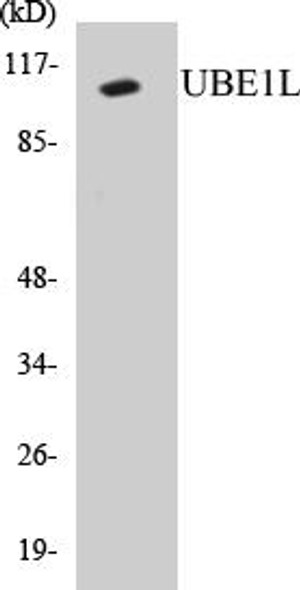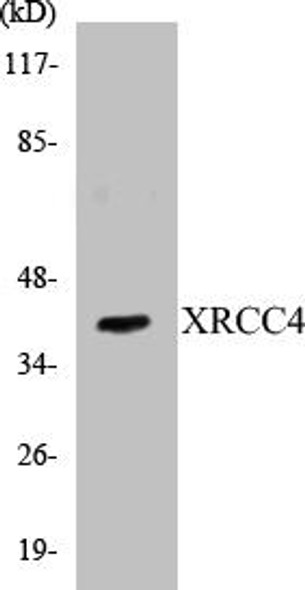Description
p16 INK Colorimetric Cell-Based ELISA Kit
The p16 INK4a Colorimetric Cell-Based ELISA Kit is specifically designed for the accurate and efficient detection of p16 INK4a protein levels in cell lysates and tissue culture supernatants. This kit offers high sensitivity and specificity, ensuring precise and reliable results for a variety of research applications.p16 INK4a is a tumor suppressor protein that plays a vital role in regulating cell cycle progression and cellular senescence.
Abnormalities in p16 INK4a expression have been linked to various cancers, making it a valuable biomarker for studying cancer development and progression. The p16 INK4a Colorimetric Cell-Based ELISA Kit provides researchers with a powerful tool for understanding the role of p16 INK4a in cancer biology and identifying potential therapeutic targets.
| Product Name: | p16 INK Colorimetric Cell-Based ELISA |
| Product Code: | CBCAB00012 |
| ELISA Type: | Cell-Based |
| Target: | p16 INK |
| Reactivity: | Human, Mouse |
| Dynamic Range: | > 5000 Cells |
| Detection Method: | Colorimetric 450 nmStorage/Stability:4°C/6 Months |
| Format: | 96-Well Microplate |
The p16 INK Colorimetric Cell-Based ELISA Kit is a convenient, lysate-free, high throughput and sensitive assay kit that can detect p16 INK protein expression profile in cells. The kit can be used for measuring the relative amounts of p16 INK in cultured cells as well as screening for the effects that various treatments, inhibitors (ie siRNA or chemicals), or activators have on p16 INK.
Qualitative determination of p16 INK concentration is achieved by an indirect ELISA format. In essence, p16 INK is captured by p16 INK-specific primary antibodies while the HRP-conjugated secondary antibodies bind the Fc region of the primary antibody. Through this binding, the HRP enzyme conjugated to the secondary antibody can catalyze a colorimetric reaction upon substrate addition. Due to the qualitative nature of the Cell-Based ELISA, multiple normalization methods are needed:
| 1. | A monoclonal antibody specific for human GAPDH is included to serve as an internal positive control in normalizing the target absorbance values. |
| 2. | Following the colorimetric measurement of HRP activity via substrate addition, the Crystal Violet whole-cell staining method may be used to determine cell density. After staining, the results can be analysed by normalizing the absorbance values to cell amounts, by which the plating difference can be adjusted. |
| Database Information: | Gene ID: 1029, UniProt ID: P42771, OMIM: 151623/155601/155720/155755/600160/606719, Unigene: Hs.512599 |
| Gene Symbol: | CDKN2A |
| Sub Type: | None |
| UniProt Protein Function: | Function: Acts as a negative regulator of the proliferation of normal cells by interacting strongly with CDK4 and CDK6. This inhibits their ability to interact with cyclins D and to phosphorylate the retinoblastoma protein. Ref.11 Ref.13 |
| UniProt Protein Details: | Subunit structure: Heterodimer with CDK4 or CDK6. Predominant p16 complexes contained CDK6. Interacts (isoforms 1,2 and 4) with CDK4 (both 'T-172'-phosphorylated and non-phosphorylated forms); the interaction inhibits cyclin D-CDK4 kinase activity. Interacts with ISCO2. Ref.13 Ref.14 Subcellular location: Cytoplasm. Nucleus Ref.14. Tissue specificity: Widely expressed but not detected in brain or skeletal muscle. Isoform 3 is pancreas-specific. Ref.2 Post-translational modification: Phosphorylation seems to increase interaction with CDK4. Involvement in Disease: The association between cutaneous and uveal melanomas in some families suggests that mutations in CDKN2A may account for a proportion of uveal melanomas. However, CDKN2A mutations are rarely found in uveal melanoma patients.Melanoma, cutaneous malignant 2 (CMM2) [MIM:155601]: A malignant neoplasm of melanocytes, arising de novo or from a pre-existing benign nevus, which occurs most often in the skin but also may involve other sites.Note: Disease susceptibility is associated with variations affecting the gene represented in this entry. Ref.24 Ref.27 Ref.29 Ref.30 Ref.31 Ref.32 Ref.34 Ref.36 Ref.38 Ref.39 Ref.41 Ref.42Familial atypical multiple mole melanoma-pancreatic carcinoma syndrome (FAMMMPC) [MIM:606719]: An inherited cancer predisposition syndrome characterized by an increased risk of developing malignant melanoma and/or pancreatic cancer. Mutation carriers within families may develop either or both types of cancer.Note: The disease is caused by mutations affecting the gene represented in this entry.Li-Fraumeni syndrome (LFS) [MIM:151623]: Autosomal dominant familial cancer syndrome that in its classic form is defined by the existence of a proband affected by a sarcoma before 45 years with a first degree relative affected by any tumor before 45 years and another first degree relative with any tumor before 45 years or a sarcoma at any age. Other clinical definitions for LFS have been proposed (PubMed:8118819 and PubMed:8718514) and called Li-Fraumeni like syndrome (LFL). In these families affected relatives develop a diverse set of malignancies at unusually early ages. Four types of cancers account for 80% of tumors occurring in TP53 germline mutation carriers: breast cancers, soft tissue and bone sarcomas, brain tumors (astrocytomas) and adrenocortical carcinomas. Less frequent tumors include choroid plexus carcinoma or papilloma before the age of 15, rhabdomyosarcoma before the age of 5, leukemia, Wilms tumor, malignant phyllodes tumor, colorectal and gastric cancers.Note: The disease is caused by mutations affecting the gene represented in this entry. Ref.35Melanoma-astrocytoma syndrome (MASTS) [MIM:155755]: Characterized by a dual predisposition to melanoma and neural system tumors, commonly astrocytoma.Note: The disease is caused by mutations affecting the gene represented in this entry. Ref.37 Sequence similarities: Belongs to the CDKN2 cyclin-dependent kinase inhibitor family.Contains 4 ANK repeats. Sequence caution: The sequence AAB60645.1 differs from that shown. Reason: Erroneous initiation. |
| NCBI Summary: | This gene generates several transcript variants which differ in their first exons. At least three alternatively spliced variants encoding distinct proteins have been reported, two of which encode structurally related isoforms known to function as inhibitors of CDK4 kinase. The remaining transcript includes an alternate first exon located 20 Kb upstream of the remainder of the gene; this transcript contains an alternate open reading frame (ARF) that specifies a protein which is structurally unrelated to the products of the other variants. This ARF product functions as a stabilizer of the tumor suppressor protein p53 as it can interact with, and sequester, the E3 ubiquitin-protein ligase MDM2, a protein responsible for the degradation of p53. In spite of the structural and functional differences, the CDK inhibitor isoforms and the ARF product encoded by this gene, through the regulatory roles of CDK4 and p53 in cell cycle G1 progression, share a common functionality in cell cycle G1 control. This gene is frequently mutated or deleted in a wide variety of tumors, and is known to be an important tumor suppressor gene. [provided by RefSeq, Sep 2012] |
| UniProt Code: | P42771 |
| NCBI GenInfo Identifier: | 3041660 |
| NCBI Gene ID: | 1029 |
| NCBI Accession: | P42771.2 |
| UniProt Secondary Accession: | P42771,O95440, Q15191, Q5VVJ5, Q96B52, Q9NP05, A5X2G7 D3DRK1, |
| UniProt Related Accession: | P42771,Q8N726 |
| Molecular Weight: | |
| NCBI Full Name: | Cyclin-dependent kinase inhibitor 2A, isoforms 1/2/3 |
| NCBI Synonym Full Names: | cyclin-dependent kinase inhibitor 2A |
| NCBI Official Symbol: | CDKN2A |
| NCBI Official Synonym Symbols: | ARF; MLM; P14; P16; P19; CMM2; INK4; MTS1; TP16; CDK4I; CDKN2; INK4A; MTS-1; P14ARF; P19ARF; P16INK4; P16INK4A; P16-INK4A |
| NCBI Protein Information: | cyclin-dependent kinase inhibitor 2A; CDK4 inhibitor p16-INK4; multiple tumor suppressor 1; cell cycle negative regulator beta; cyclin-dependent kinase 4 inhibitor A; cyclin-dependent kinase inhibitor 2A (melanoma, p16, inhibits CDK4) |
| UniProt Protein Name: | Cyclin-dependent kinase inhibitor 2A, isoforms 1/2/3 |
| UniProt Synonym Protein Names: | Cyclin-dependent kinase 4 inhibitor A; CDK4I; Multiple tumor suppressor 1; MTS-1; p16-INK4a |
| UniProt Gene Name: | CDKN2A |
| UniProt Entry Name: | CD2A1_HUMAN |
| Component | Quantity |
| 96-Well Cell Culture Clear-Bottom Microplate | 2 plates |
| 10X TBS | 24 mL |
| Quenching Buffer | 24 mL |
| Blocking Buffer | 50 mL |
| 15X Wash Buffer | 50 mL |
| Primary Antibody Diluent | 12 mL |
| 100x Anti-Phospho Target Antibody | 60 µL |
| 100x Anti-Target Antibody | 60 µL |
| Anti-GAPDH Antibody | 60 µL |
| HRP-Conjugated Anti-Rabbit IgG Antibody | 12 mL |
| HRP-Conjugated Anti-Mouse IgG Antibody | 12 mL |
| SDS Solution | 12 mL |
| Stop Solution | 24 mL |
| Ready-to-Use Substrate | 12 mL |
| Crystal Violet Solution | 12 mL |
| Adhesive Plate Seals | 2 seals |
The following materials and/or equipment are NOT provided in this kit but are necessary to successfully conduct the experiment:
- Microplate reader able to measure absorbance at 450 nm and/or 595 nm for Crystal Violet Cell Staining (Optional)
- Micropipettes with capability of measuring volumes ranging from 1 µL to 1 ml
- 37% formaldehyde (Sigma Cat# F-8775) or formaldehyde from other sources
- Squirt bottle, manifold dispenser, multichannel pipette reservoir or automated microplate washer
- Graph paper or computer software capable of generating or displaying logarithmic functions
- Absorbent papers or vacuum aspirator
- Test tubes or microfuge tubes capable of storing ≥1 ml
- Poly-L-Lysine (Sigma Cat# P4832 for suspension cells)
- Orbital shaker (optional)
- Deionized or sterile water
*Note: Protocols are specific to each batch/lot. For the correct instructions please follow the protocol included in your kit.
| Step | Procedure |
| 1. | Seed 200 µL of 20,000 adherent cells in culture medium in each well of a 96-well plate. The plates included in the kit are sterile and treated for cell culture. For suspension cells and loosely attached cells, coat the plates with 100 µL of 10 µg/ml Poly-L-Lysine (not included) to each well of a 96-well plate for 30 minutes at 37°C prior to adding cells. |
| 2. | Incubate the cells for overnight at 37°C, 5% CO2. |
| 3. | Treat the cells as desired. |
| 4. | Remove the cell culture medium and rinse with 200 µL of 1x TBS, twice. |
| 5. | Fix the cells by incubating with 100 µL of Fixing Solution for 20 minutes at room temperature. The 4% formaldehyde is used for adherent cells and 8% formaldehyde is used for suspension cells and loosely attached cells. |
| 6. | Remove the Fixing Solution and wash the plate 3 times with 200 µL 1x Wash Buffer for five minutes each time with gentle shaking on the orbital shaker. The plate can be stored at 4°C for a week. |
| 7. | Add 100 µL of Quenching Buffer and incubate for 20 minutes at room temperature. |
| 8. | Wash the plate 3 times with 1x Wash Buffer for 5 minutes each time. |
| 9. | Add 200 µL of Blocking Buffer and incubate for 1 hour at room temperature. |
| 10. | Wash 3 times with 200 µL of 1x Wash Buffer for 5 minutes each time. |
| 11. | Add 50 µL of 1x primary antibodies (Anti-p16 INK Antibody and/or Anti-GAPDH Antibody) to the corresponding wells, cover with Parafilm and incubate for 16 hours (overnight) at 4°C. If the target expression is known to be high, incubate for 2 hours at room temperature. |
| 12. | Wash 3 times with 200 µL of 1x Wash Buffer for 5 minutes each time. |
| 13. | Add 50 µL of 1x secondary antibodies (HRP-Conjugated AntiRabbit IgG Antibody or HRP-Conjugated Anti-Mouse IgG Antibody) to corresponding wells and incubate for 1.5 hours at room temperature. |
| 14. | Wash 3 times with 200 µL of 1x Wash Buffer for 5 minutes each time. |
| 15. | Add 50 µL of Ready-to-Use Substrate to each well and incubate for 30 minutes at room temperature in the dark. |
| 16. | Add 50 µL of Stop Solution to each well and read OD at 450 nm immediately using the microplate reader. |
(Additional Crystal Violet staining may be performed if desired – details of this may be found in the kit technical manual.)






